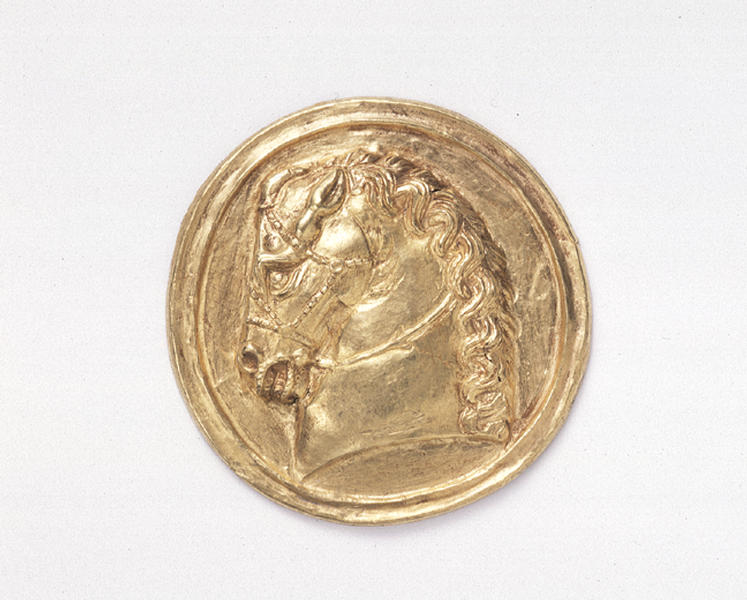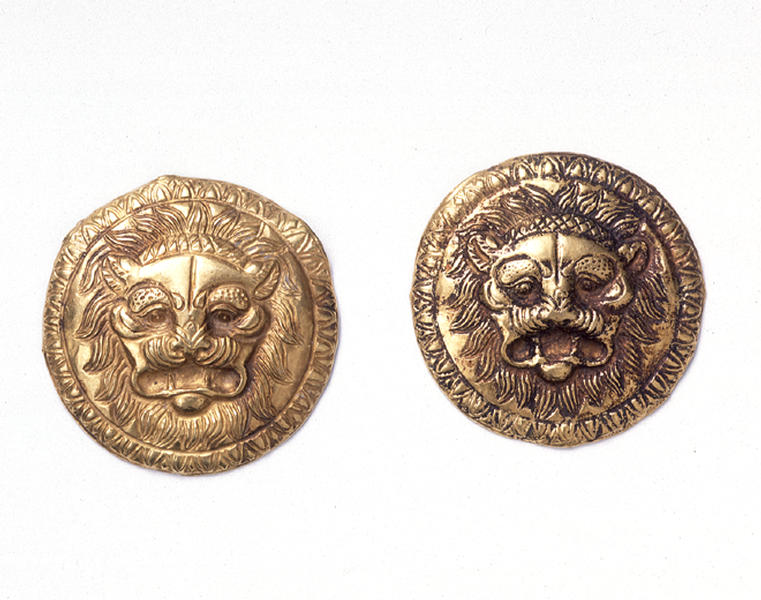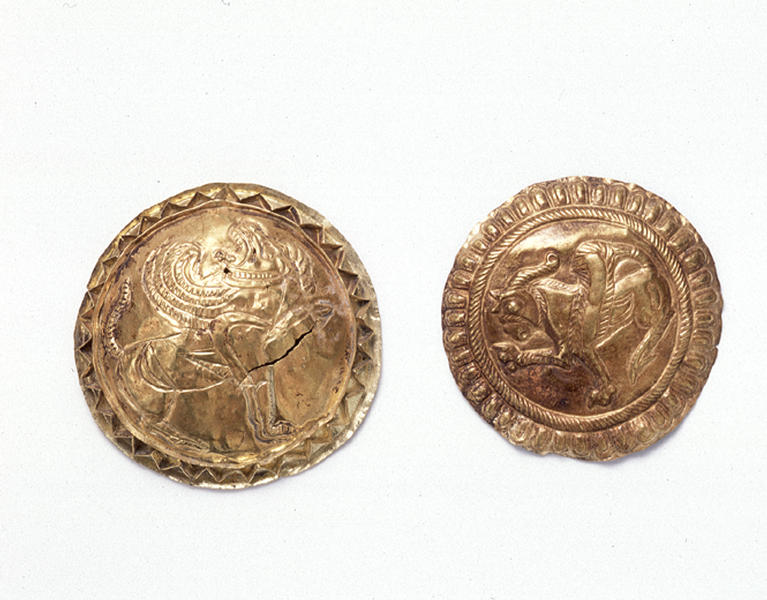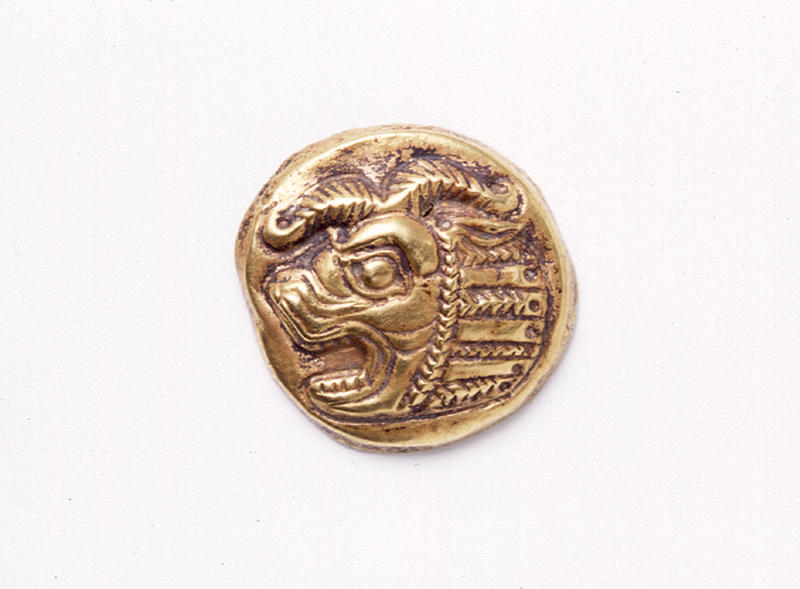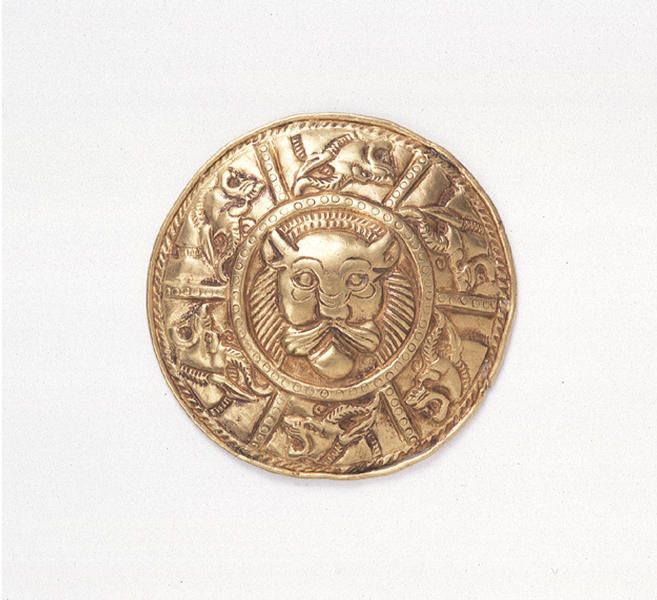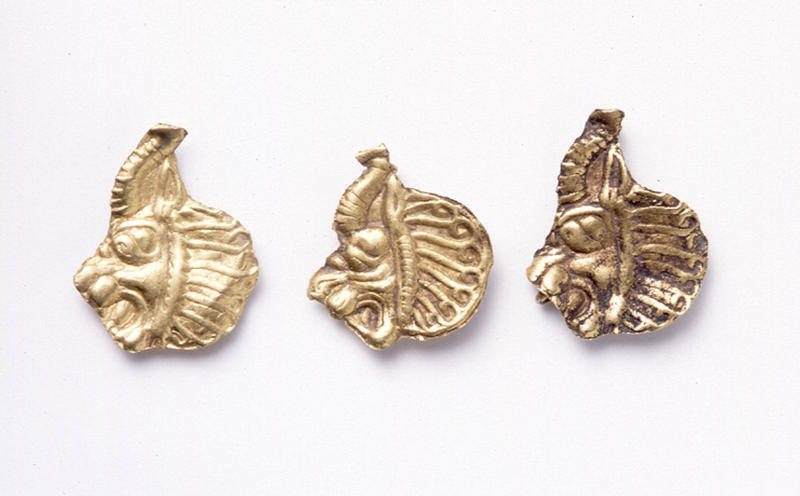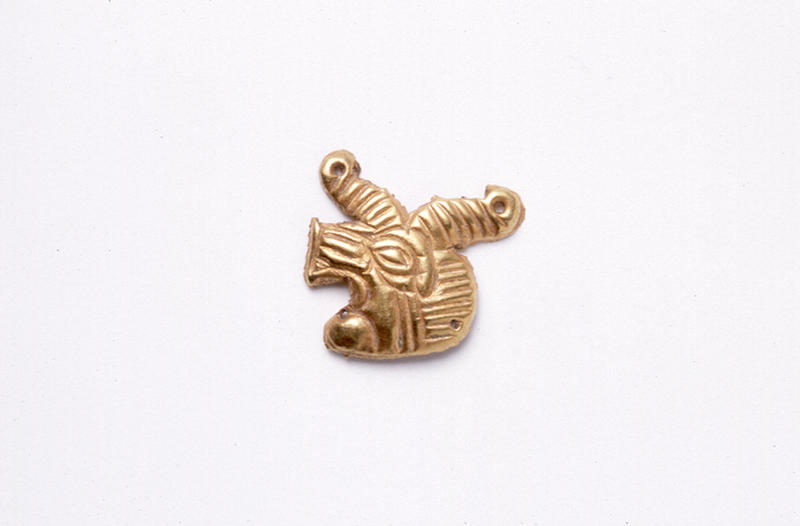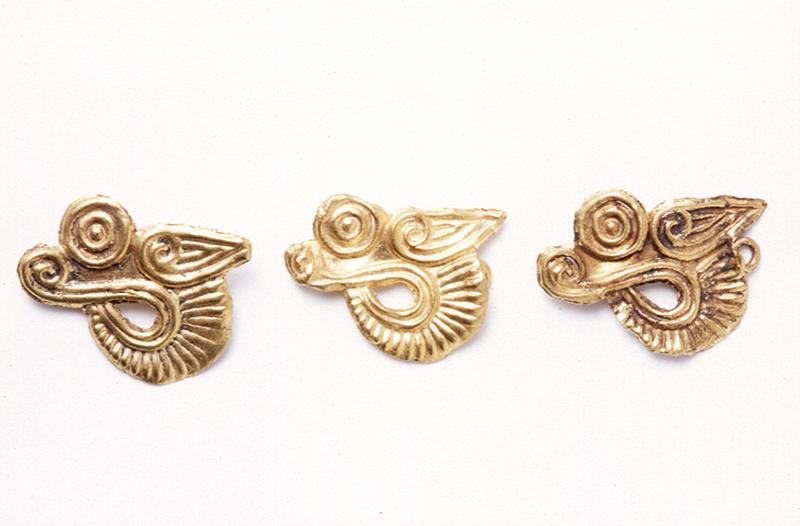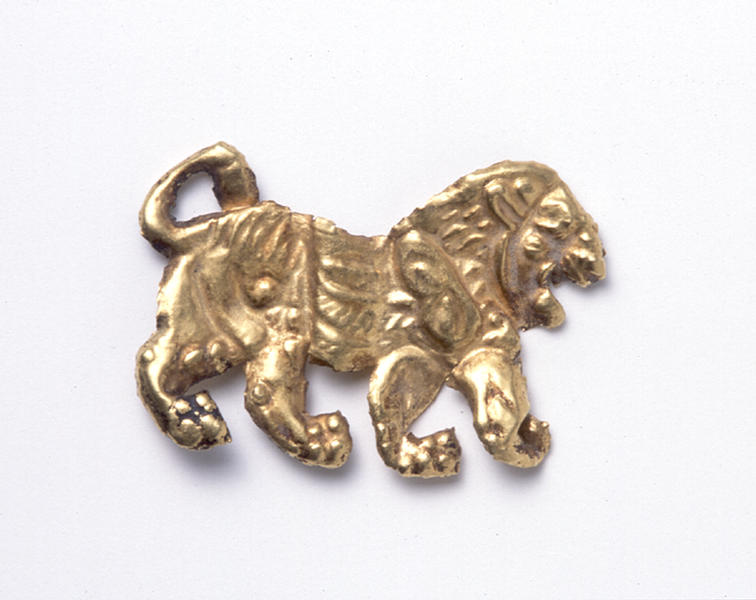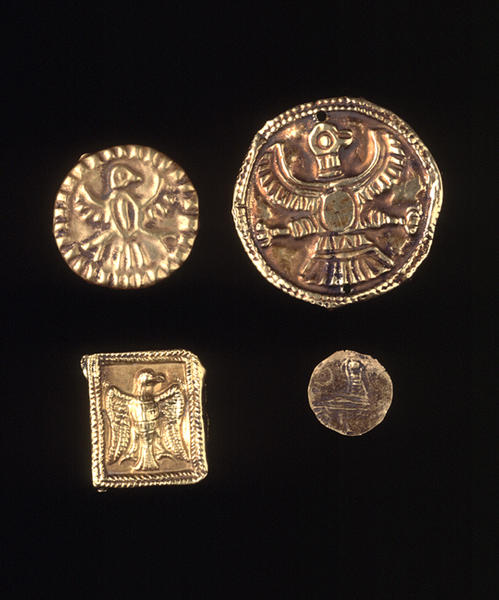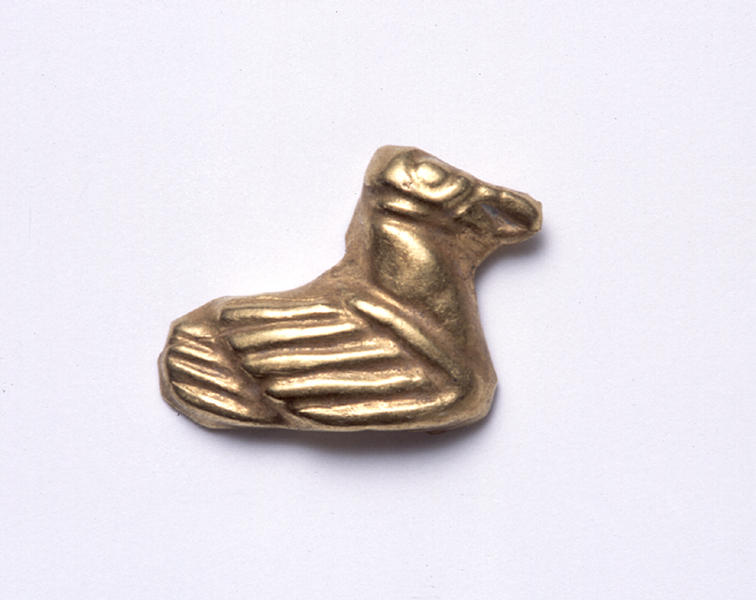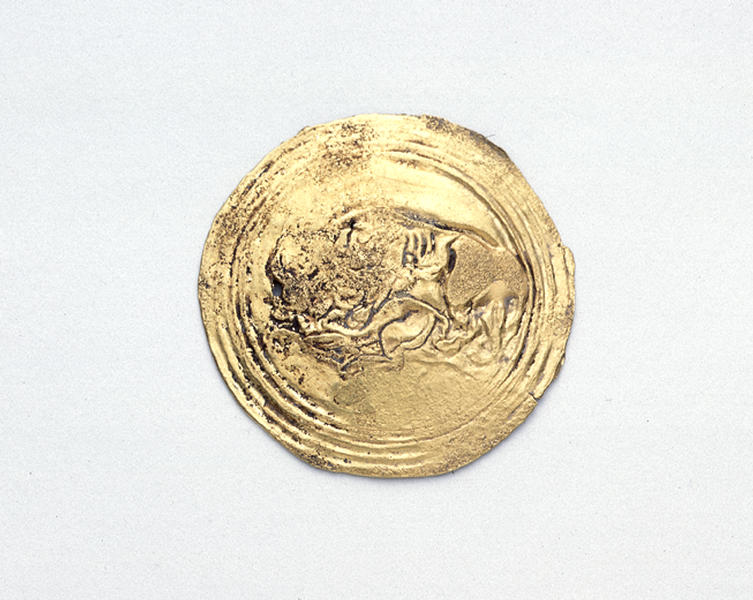Appliques and Brooches
- 5th - 2nd century B.C.
- Gold
Catalogue Entry
5th‐2nd century B.C.
Gold
(a)H. 5.6 cm(b)H. 3.4 cm
cH. 3.5 cm(d)H. 3.3 cm
(e)H. 4.8 cm(f)H. 2.0 cm
(g)H. 1.6 cm, W. 1.3 cm(h)H. 1.5 cm, W. 1.1 cm
(i)H. 1.5 cm, W. 2.1 cm(j)H. 1.6 cm, W. 2.4 cm
(k)H. 1.8 cm(l)H. 2.4 cm
(m)H. 1.6 cm, W. 1.4 cm(n)H. 1.0 cm
(o)H. 1.0 cm, W. 1.2 cm(p)H. 3.2 cm
(a) A horse head has been sculpted and hammered into a circular gold sheet. The horse's eyes look straight forward, and the bit is clenched between his teeth as his jaw is pulled tight against his chest. The forehead line is straight and the mane is unshorn and wavy. The horse's ears stand firmly up. These characteristics, and the type of horse gear shown, indicate that this work is Hellenistic in style.
(b) A lion's head has been sculpted and hammered into a circular gold sheet. The lion's mouth is open, with his fangs bared. The area around the lion's head is filled with his mane, which is further circled by Ionic egg and dart motifs. This design is also seen in the architectural decoration at Takht-I Sangin. There are also examples of appliques and brooches in the Oxus treasure with similar designs. (Oxus no. 40)
c, (d) A winged lion-griffin shown with antlers has been incised onto a circular gold sheet. On Applique c, the body of the animal faces to the right as the head faces to the upper left, while the entire animal on Applique d faces to the left. Both designs show one foreleg raised, the griffin's threatening pose in Greece seen for centuries before this work. The wing-like fur pattern seen on the belly of both animals is the Persian style for this animal. Ornamental appliques and brooches with similar motifs can be found in the Oxus treasure. (Oxus nos. 26, 27, 28)
(e) The head of a lion-griffin with antlers, facing to the left with mouth open, has been hammered into a round sheet of gold.
(f) A lion's face is shown face-on in the central medallion on a circular sheet of gold. The area around the medallion is separated into six sections, with each section showing a lion-griffin facing to the left.
(g) Lion-griffin heads facing to the left have been hammered and formed out of sheet gold. This design is seen throughout Persia.
(h) A profile of a moufflon has been hammered and formed out of sheet gold.
(i) A stylized wolf face has been hammered and formed out of sheet gold.
(j) A lion walking to the right has been hammered out of thick sheet gold. The lion's back is shown in the crescent and comma design, and there is feather-like hair on his sides. The shoulder area shows the "pear and apple" design. While tiny in scale, all of these features indicate that the work is an example of the Achaemenid period style.
(k)-(m) A bird of prey is shown from head on with wing's spread, hammered out of a sheet of gold. The head is turned to full right profile. In Brooches k and l, the legs of the bird are spread wide to right and left. Similar designs can be seen in brooches and appliques from the Oxus treasure. (nos. 25, 33, 34). This image is thought to derive from designs of the Egyptian sun god.
(p) A lion facing left and attacking a ram has been incised on a circular sheet of gold. Four concentric circles surround the design.
